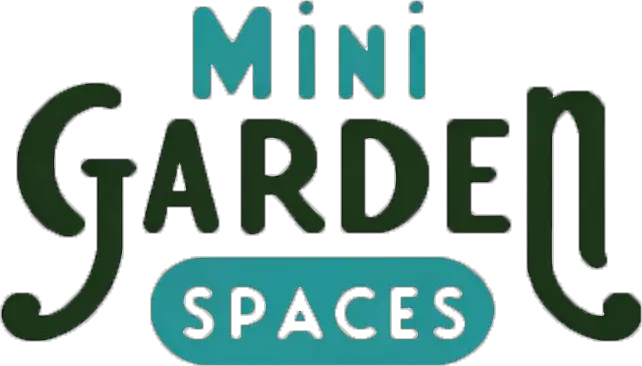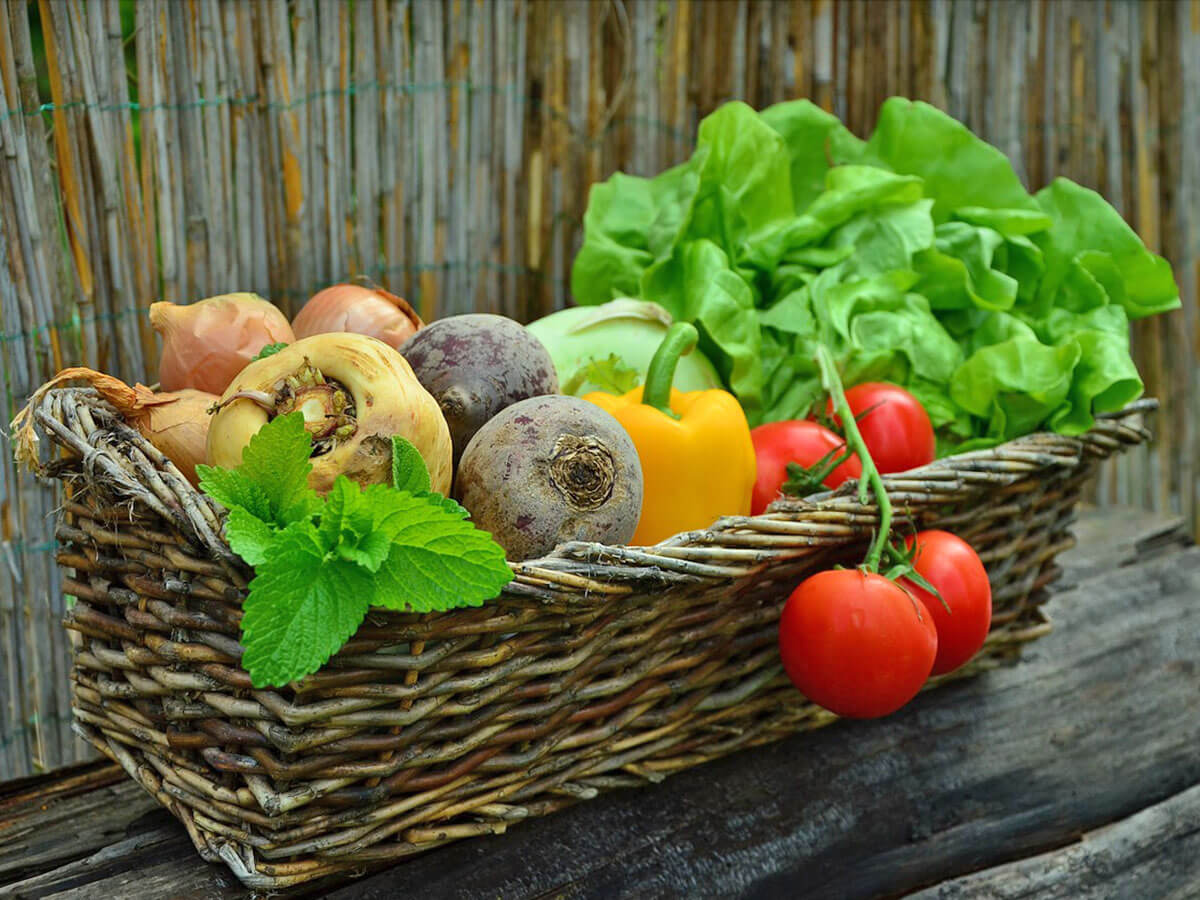How to Grow More Veg in a Small Garden
April, 2023 |We may not have acres and acres of space in our mini gardens, but that can’t stop us from creating amazing harvests!
Over the last few decades, traditional gardening techniques have been transformed to allow us to grow veg pretty much anywhere. From balconies and window boxes to containers and vertical walls.
The physical size of your space can be limiting, but there are strategies you can use to maximize your harvests and grow more veg in your small garden.
Disclaimer: This post contains affiliate links. When you make a purchase through one of these links I may earn a commission. This comes at no extra cost to you.
How much food can you grow in a small garden?
By using the below tips to maximise your growing space, you can grow a surprising amount of food in a small garden. Rough gardening estimates often suggest that you could grow as much as one pound of food per square foot. But it depends on what you’re growing, whether it’s heavy steak tomatoes or a dwarf pea plant.
But with clever planting and layout ideas for small gardens like vertical gardening or keyhole gardening, you could expect to grow much more.
How to grow lots of vegetables in a small area
After testing different vegetables, vertical supports, and interplanting different veg in containers, I’ve gathered together these tips to help you grow more vegetables in a small garden.
Whether you have a narrow balcony, mini urban garden, or a porch corner, these tips will help you boost your harvests and maximize the amount of fruit and veg you can grow in your small garden space.
1. Vertically growing fruit and veg
Creating a vertical vegetable garden is definitely the optimum way of growing more vegetables in a mini garden space.
There are lots of amazing fruits and vegetables that will grow vertically, from mini pumpkins to peas with pretty pods!
To support climbing vines and growing stems, you’ll need some form of vertical support to keep everything growing upright. Trellises, arbors, and arches are very attractive options. And there are some clever, space-saving vertical planters out there.
But for a more budget friendly vertical garden, you could simply use bamboo canes and twine. Or you could have a go at creating DIY vertical supports!

2. Quick Growing Crops
It’s nice to have something to harvest as you’re waiting for larger, slow-maturing, or late-season fruits or vegetables to develop. Like melons or pumpkins.
Quick-growing crops like radishes, lettuce, and pak choi have a shorter time between seed sowing and harvesting. This means you can start harvesting veg sooner, and even sow multiple sets of seeds over the growing season to extend your harvest.

3. Give seedlings the best start
You can start the vast majority of vegetable seeds indoors. Most seed packets will recommend the best time to start them off indoors.
But to really optimize the health of your seedlings you need to place them on the sunniest windowsill, or the sunniest part of your house or apartment.
Sometimes you have to get creative with finding the sunlight! Seedlings can get leggy very quickly. Leggy seedlings are generally quite weak, and they may not grow into healthy, high-yielding plants. So healthy seedlings = healthy plants!
When I first started growing veg I lived in a house with no south-facing windows. My seedlings would often get leggy, so I set up a table in front of a south-facing door with windows. I had to move the table each time I needed to go through it, but it was worth it for strong seedlings!
Grow Lights
You can also use a grow light to give your seedlings a boost if you don’t have sunny windowsills or you simply want to start your seedlings off earlier.
This grow light from Amazon has a clip which can be fastened to a table. It’s definitely a more practical option compared to suspended grow lamps like this hanging grow light, which takes a bit more setting up.

4. Interplanting Crops
If you’re anything like me, when you get to growing veg it can be tempting to grow the widest variety possible.
Instead of having one plant per container, interplanting crops is a great way to help you fit as many different veg plants into a space as possible.
The idea is that you can plant, for example, radishes or beetroot in a container that’s growing a vertically climbing pumpkin.
It’s another great way to maximize your space, so you can fit more plants in and ultimately boost your harvests!

5. Choosing High Yield Plants
There are some vegetable plants that will produce amazing yields of crops. High yield vegetable plants include pole beans and tomatoes. Both of which are perfectly suited to growing vertically.
High-yield plants essentially produce a heavier harvest and provide more value in a small garden.
An example of a low-yield crop is grain. However, you can definitely grow grains in a small garden. You won’t get as good a harvest, or as much value, as you would from a climbing pole bean.
There are also some lovely trailing tomato varieties that are lovely plants to grow in hanging baskets to give you more floor space.

6. Optimum Conditions
Don’t ignore the growing conditions on plant labels or seed packets! Make sure you position your containers or plants in a place where they’ll receive optimum light and soil conditions. For example, tender vegetables like spinach may bolt in harsh sunlight, and root vegetables like carrots or parsnips won’t grow well in compact clay soil.
A common issue we often face in small gardens is either too much sunlight or too little.
Harsh sunlight on a balcony quickly dries out the compost in containers and can even scorch the leaves of some vegetables. That’s where clever water-saving techniques in a small garden come in!
Most fruit and vegetables need between 6-8 hours of sunlight. However, if you find that sunlight is at a minimum, check out these shade-tolerant crops you can grow instead.
Choose the right varieties
Another bonus tip is to make sure you choose the right plants for your climate and conditions.
In cooler areas, you might need to choose more cold-tolerant fruits or vegetables to make sure they survive and thrive in your climate. There are some lovely melon varieties for cool climates and also some cucumber varieties that tolerate cooler conditions.
Often seed packets will give you an indication of the best conditions needed for plants. Some cucumber varieties will say whether they’re best for the greenhouse or happy growing outside!
7. Succession Planting
As we mentioned above, lots of quick growing vegetables, like leafy greens (lettuce/spinach) and radishes are perfect for succession planting! For example, this means sowing a tray of radishes, then 2-3 weeks later sowing another set.
You can usually start them off early in the year and keep different sets going through until the fall.
In the heat of summer, lots of these tender crops are susceptible to bolting (the harsh heat conditions make them quickly want to set seed). So by succession planting, you’ll always have a fresh supply of young plants to harvest from.
8. Grow Indoor Crops Too
When outdoor space is limited, there are crops you can grow inside on windowsills too!
A few examples include:
- Microgreens
- Herbs
- Lettuce
- Micro tomatoes!
Growing microgreens is one of the quickest and easiest ways of being able to harvest highly nutritious food indoors. If you need persuading, here are 5 reasons why you should grow microgreens on your windowsills.
But you can also grow traditional veg too! Micro tomato varieties usually grow no more than a foot high, making them ideal for sunny windowsills and indoor harvests.
If you have a nice bright windowsill, you should even be able to grow some crops through winter too. Helping to extend your harvest when other crops have been killed off by the frost.
Related Read | 9 Indoor Herbs to Grow on a Windowsill This Winter

9. Choose dwarf varieties
From dwarf tomatoes to small bush bean varieties, there’s an amazing variety of dwarf vegetable plants now available for us to grow in smaller gardens. Their compact size allows us to grow vegetables in a garden space that may not have been suitable for larger varieties.
For example, many tomato plants can grow to over 6ft, but now you can get small, bushy patio-friendly varieties like ‘Dwarf Champion’ or ‘Tidy Treats’.

Featured Image by congerdesign from Pixabay





